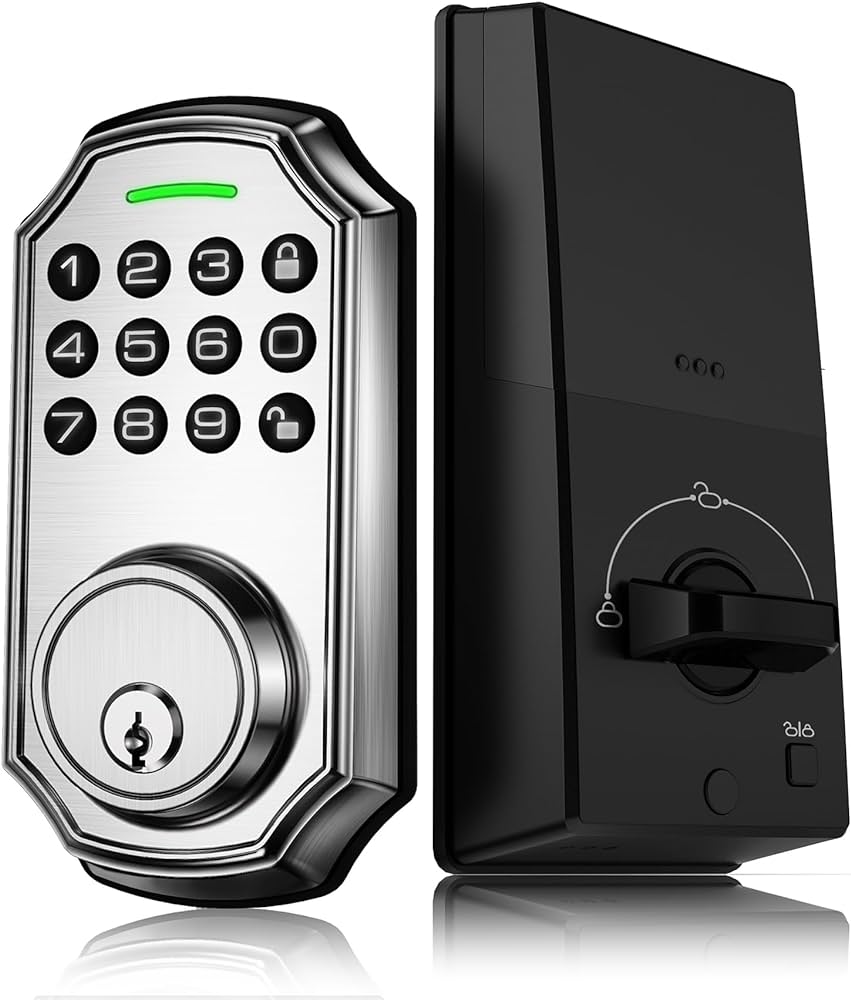When it comes to your home’s security, keypad smart locks can seem like a fortress protecting your castle. However, behind their digital facade lies a realm of uncertainty. Are these locks as impregnable as they appear, or do they harbor vulnerabilities waiting to be explored? As you contemplate the safety of keypad smart locks, consider the layers of security they provide and the potential risks that may lurk beneath the surface. Read Digital Door Lock in Hyderabad, Gurgaon & Delhi
Security Concerns With Keypad Smart Locks
When considering the security of keypad smart locks, it’s crucial to understand the potential vulnerabilities that may exist. Two significant concerns that need to be addressed are remote hacking and physical tampering.
- Remote hacking poses a serious threat to the security of keypad smart locks. Hackers can exploit weaknesses in the lock’s wireless communication protocols to gain unauthorized access. This can be particularly risky if the lock is connected to the internet, as it provides hackers with a larger attack surface to exploit. To mitigate this risk, manufacturers need to constantly update their firmware and encryption protocols to stay ahead of potential threats.
- On the other hand, physical tampering is another critical issue to be aware of. Attackers with physical access to the lock can attempt to bypass it using various methods, such as picking the lock or forcefully breaking it. Manufacturers should design locks with robust physical barriers to prevent such attacks. Additionally, incorporating tamper-resistant features can help detect and respond to any unauthorized attempts to manipulate the lock physically. By addressing these vulnerabilities, keypad smart locks can offer enhanced security for users.

Vulnerabilities of Keypad Smart Locks
- To fully comprehend the security risks associated with keypad smart locks, it’s imperative to dissect the vulnerabilities that can compromise their integrity, notably remote hacking and physical tampering. Keypad smart locks are susceptible to keypad bypass vulnerabilities, where attackers can exploit weaknesses in the keypad system to gain unauthorized access. This vulnerability can be exploited by individuals with malicious intent who possess the technical knowledge to bypass the keypad authentication mechanism.
- Furthermore, remote hacking risks pose a significant threat to the security of keypad smart locks. Hackers can target the communication protocols used by these locks to remotely intercept and manipulate data, allowing them to unlock the door without physical access to the property. This type of attack requires sophisticated hacking skills but can result in severe security breaches if successful. Understanding these vulnerabilities is crucial for ensuring the safety of keypad smart locks and implementing appropriate security measures to mitigate these risks effectively.
Tips to Enhance Keypad Smart Lock Security
- Enhancing the security of keypad smart locks involves implementing robust access control measures to fortify against potential vulnerabilities. To enhance the security of your keypad smart lock, consider enabling remote access cautiously. While remote access offers convenience, it can also introduce security risks if not properly secured. Ensure that the remote access feature is encrypted and protected with strong authentication mechanisms to prevent unauthorized access to your lock.
- Another crucial aspect to focus on is PIN protection. Make sure to create a unique and complex PIN that isn’t easily guessable. Avoid using common combinations like ‘1234’ or your birthdate. Regularly change your PIN to mitigate the risk of unauthorized individuals gaining access to your lock through a compromised code.
Best Practices for Using Keypad Smart Locks
- Implementing best practices when using keypad smart locks is essential to ensure the security and integrity of your access control system. To begin, pay close attention to the installation process. Make sure the lock is properly mounted and aligned to prevent tampering or forced entry. Additionally, regularly updating the access codes and ensuring they’re complex can significantly enhance security.
- Another crucial aspect to consider is the battery life of the keypad smart lock. It’s vital to monitor the battery levels regularly and replace them proactively to prevent any unexpected lockouts due to low power. Some smart locks come with low-battery indicators or backup power options, which can be advantageous in maintaining continuous operation.
Ensuring the Safety of Keypad Smart Locks
- For optimal security with keypad smart locks, prioritize regular maintenance checks to ensure reliable operation and prevent potential vulnerabilities. Proper installation is crucial for the security of your keypad smart lock. Ensure that the lock is correctly aligned and securely mounted to prevent tampering.
- When installing your keypad smart lock, follow the manufacturer’s guidelines carefully. Make sure to change default access codes and customize settings to enhance security. Consider adding additional security features like alarm systems or security cameras to complement your keypad smart lock.
- To maintain the safety of your keypad smart lock, create a maintenance checklist. Regularly inspect the lock for any signs of wear or damage. Clean the keypad and components regularly to prevent dirt or debris from affecting performance. Check and replace batteries as needed to ensure uninterrupted operation.
Conclusion
In conclusion, while keypad smart locks offer convenience and flexibility, they also come with security concerns and vulnerabilities that must be addressed. By implementing best practices and following tips to enhance security, users can ensure the safety of their keypad smart locks. It’s crucial to stay vigilant and proactive in protecting your home or property from potential threats and unauthorized access. Prioritizing security measures will help mitigate risks and maintain peace of mind.
Leave a Reply